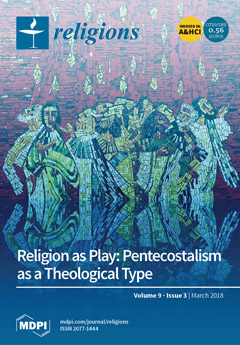Camilla Battista da Varano (1458–1524), a mystic and Franciscan nun, spent most of her life in Camerino in east-central Italy. Now a saint—since 17 October 2010—she composed two autobiographical treatises across a ten-year period mid-way through a literary career that spanned the end
[...] Read more.
Camilla Battista da Varano (1458–1524), a mystic and Franciscan nun, spent most of her life in Camerino in east-central Italy. Now a saint—since 17 October 2010—she composed two autobiographical treatises across a ten-year period mid-way through a literary career that spanned the end of the fifteenth and the early part of the sixteenth centuries. In one,
La vita spirituale (
My spiritual life, 1491), she delivered a complete spiritual life story, tracing her religious devotion from the ages of eight to thirty-three. She described her relationship with a number of men, including her father and several clerics who—to one degree or another—inspired and guided her devotional life. By the time she wrote, she had been a professed Franciscan nun for seven years. She presented herself at that point as one who had undergone visionary, mystical experiences and as a woman who had both benefitted and suffered under the control of men like her father and her spiritual directors. In the other,
Istruzioni al discepolo (
Instructions to a disciple, 1501), she told the story of her affectionate relationship with a male disciple she was directing spiritually but used a literary conceit to hide her own identity. She wrote about the spiritual director the male disciple loved and admired in the third person, apparently in a self-deprecating manner inspired by humility but thinly veiling her obvious self-confidence. In these texts, and in other of her devotional treatises, she claimed the ability to provide spiritual direction of her own and wrote in bold imagery, creatively manipulating scripture at times. She exercised a do-it-yourself approach to discernment of God’s will and even to the process of confession. She criticized inattentive spiritual directors and asserted that both her visions and the impetus for her devotional writings came directly, unmediated, from God. But Camilla also exhibited deferential attitudes and strong connections to traditional Franciscan theology while including female authors in that tradition she apparently admired, like Caterina da Bologna (1413–1463). She also wrote at times with vivid expressions of obedience to the variety of men who held some authority over her. She was, apparently, not an individual easily understood through the standard images usually associated with late medieval and early modern women. A fuller portrait of Camilla is emerging as scholars today seek to recover her original voice.
Full article





